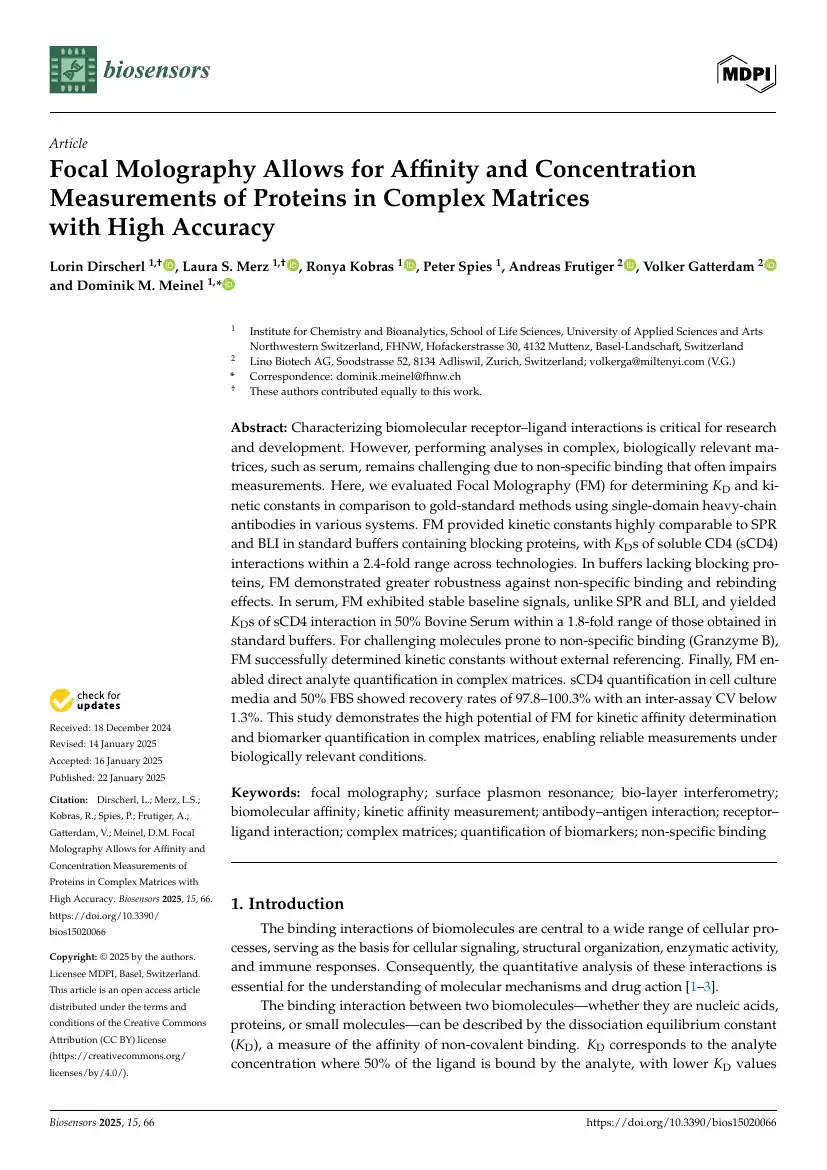Focal Molography Allows for Affinity and Concentration Measurements of Proteins in Complex Matrices with High Accuracy
Characterizing biomolecular receptor–ligand interactions is critical for research and development. However, performing analyses in complex, biologically relevant matrices, such as serum, remains challenging due to non-specific binding that often impairs measurements. Here, we evaluated Focal Molography (FM) for determining KD and kinetic constants in comparison to gold-standard methods using single-domain heavy-chain antibodies in various systems. FM provided kinetic constants highly comparable to SPR and BLI in standard buffers containing blocking proteins, with KDs of soluble CD4 (sCD4) interactions within a 2.4-fold range across technologies. In buffers lacking blocking proteins, FM demonstrated greater robustness against non-specific binding and rebinding effects. In serum, FM exhibited stable baseline signals, unlike SPR and BLI, and yielded KDs of sCD4 interaction in 50% Bovine Serum within a 1.8-fold range of those obtained in standard buffers. For challenging molecules prone to non-specific binding (Granzyme B), FM successfully determined kinetic constants without external referencing. Finally, FM enabled direct analyte quantification in complex matrices. sCD4 quantification in cell culture media and 50% FBS showed recovery rates of 97.8–100.3% with an inter-assay CV below 1.3%. This study demonstrates the high potential of FM for kinetic affinity determination and biomarker quantification in complex matrices, enabling reliable measurements under biologically relevant conditions.

